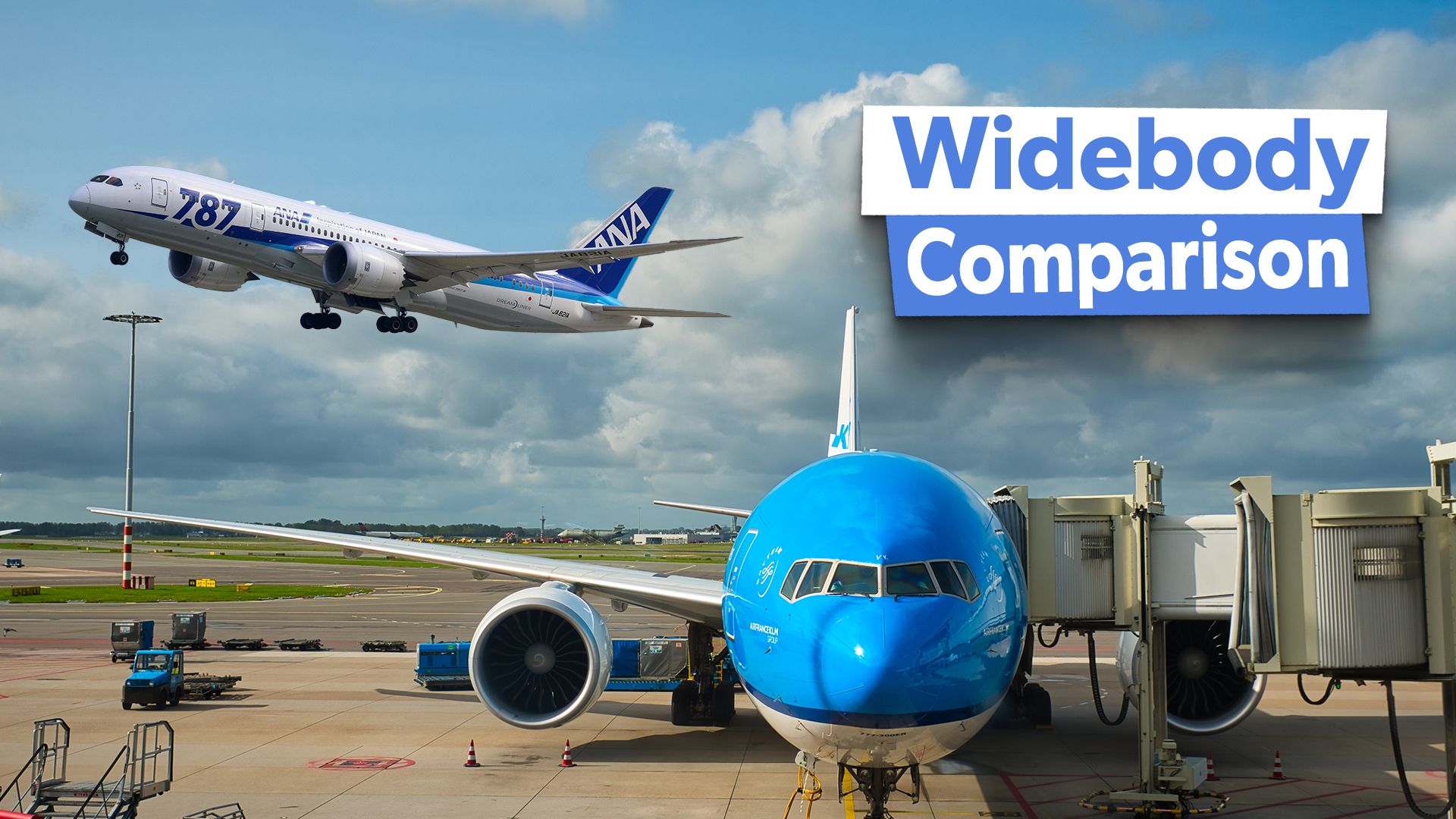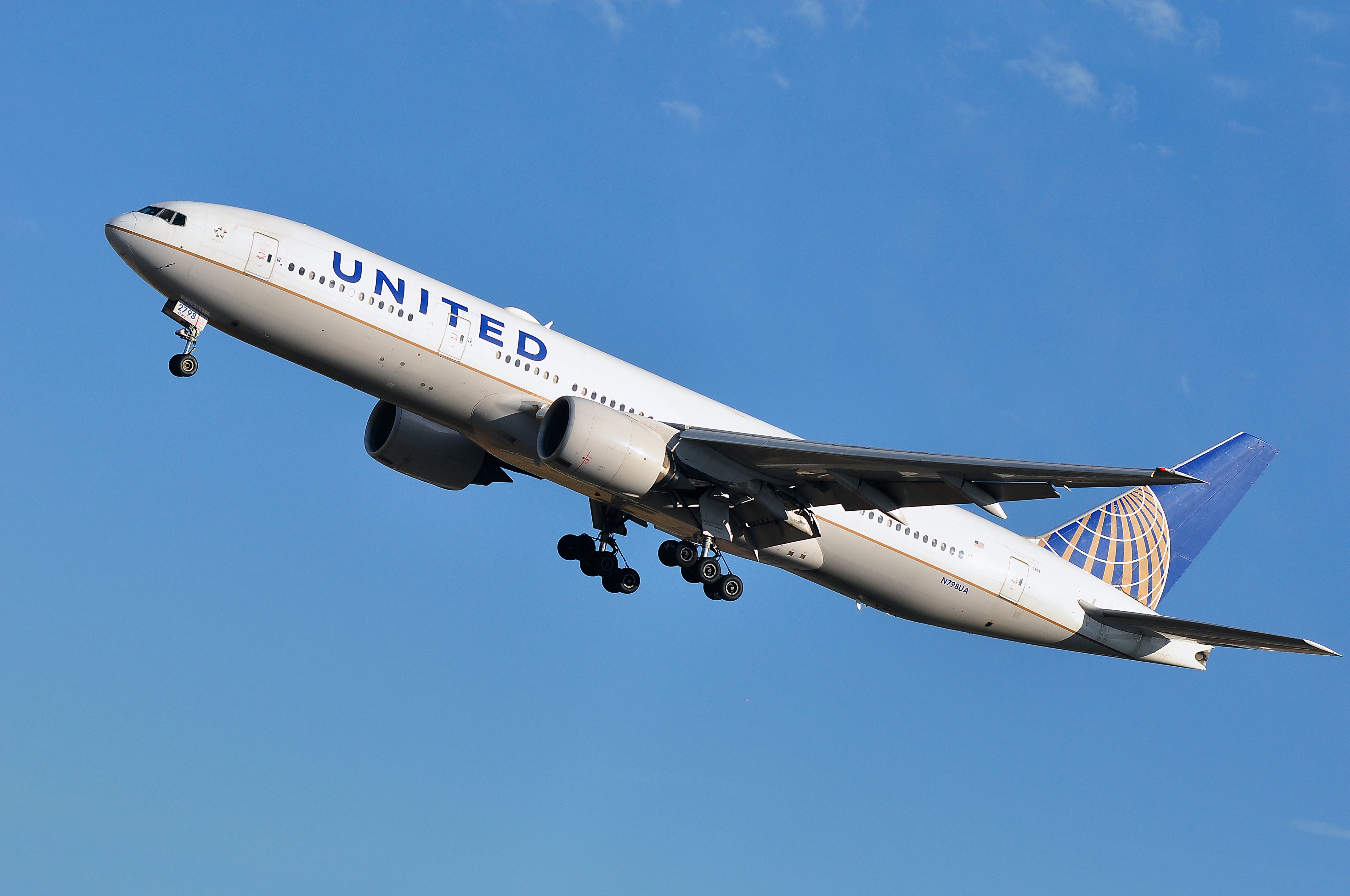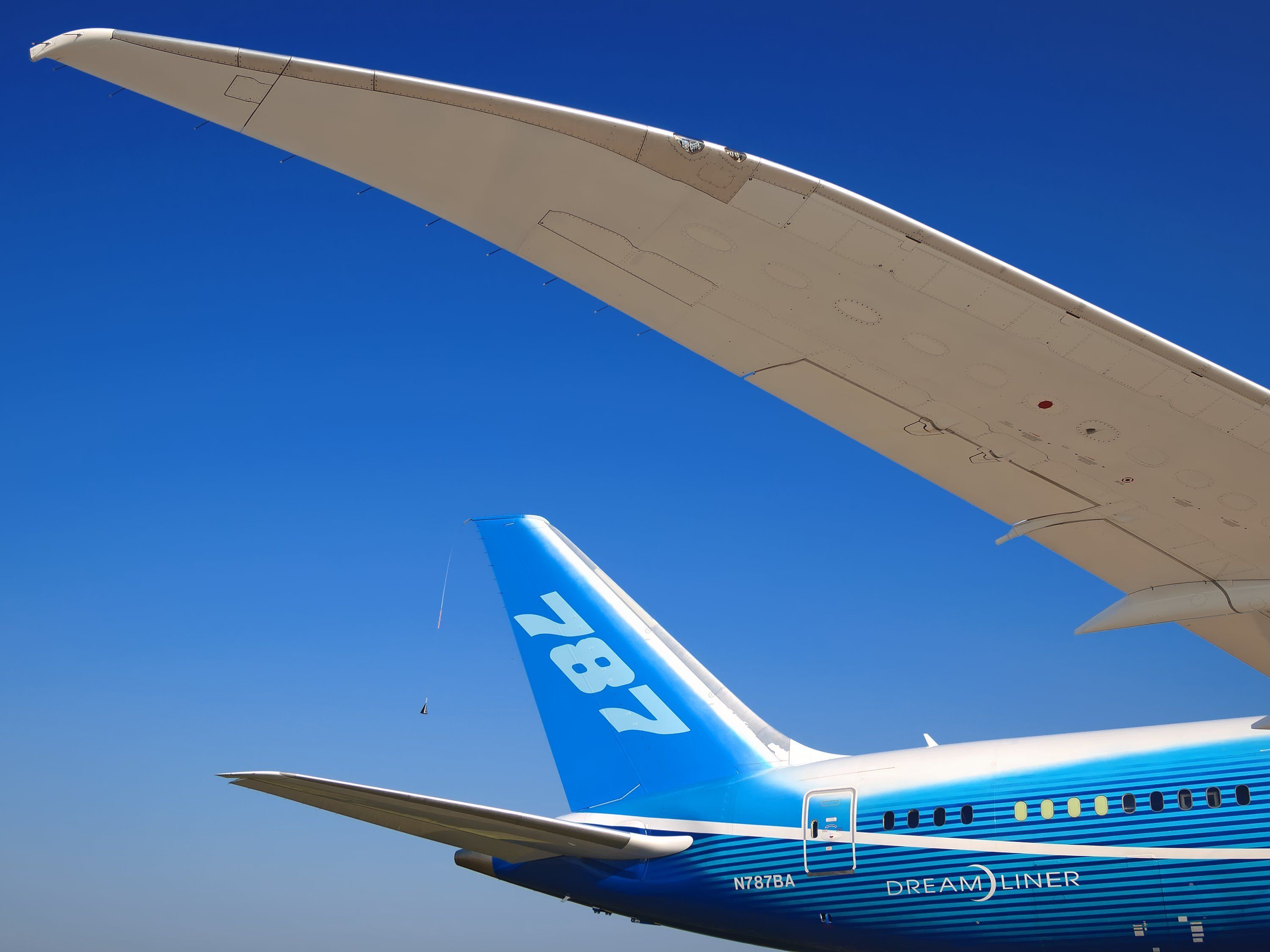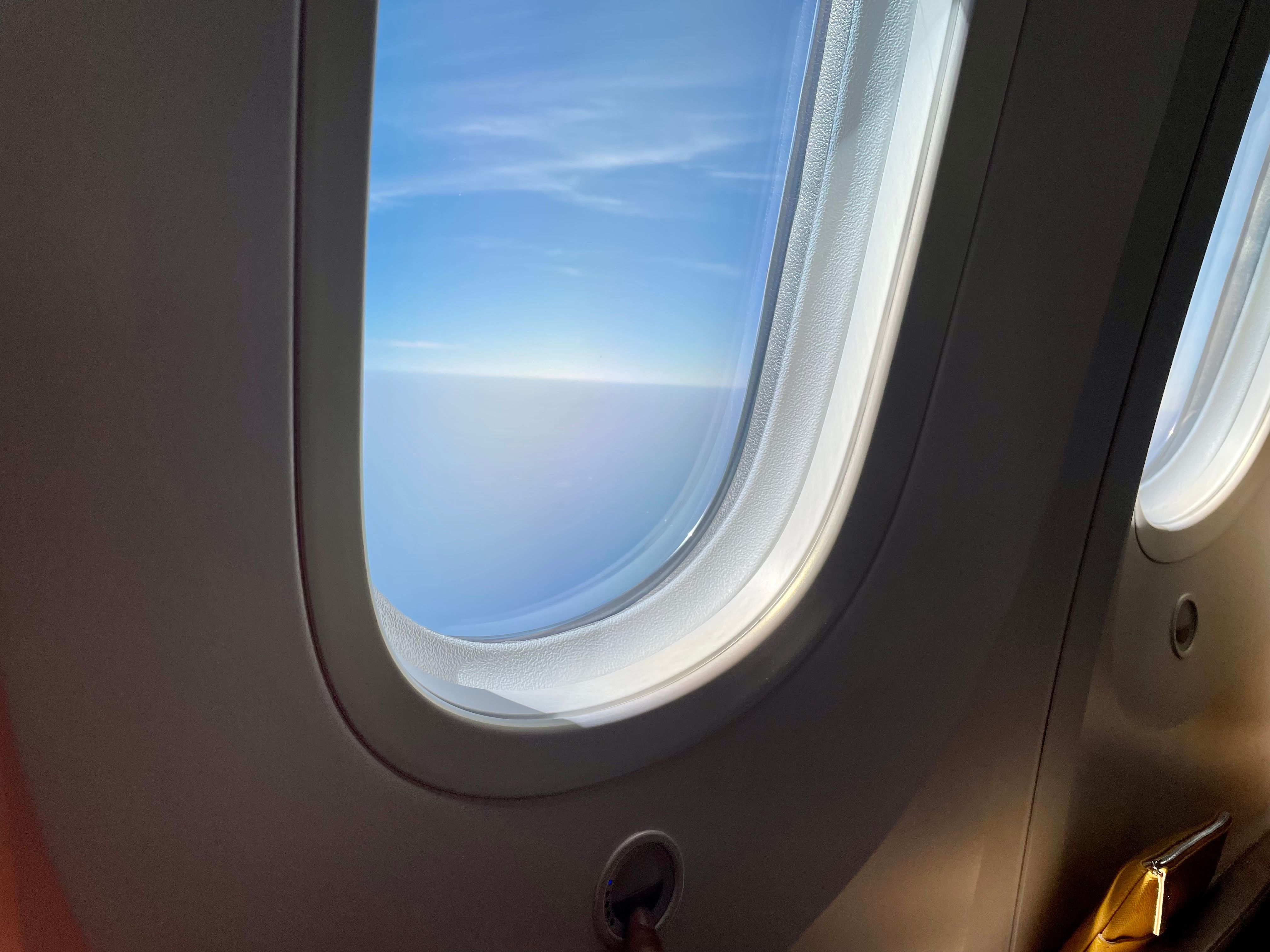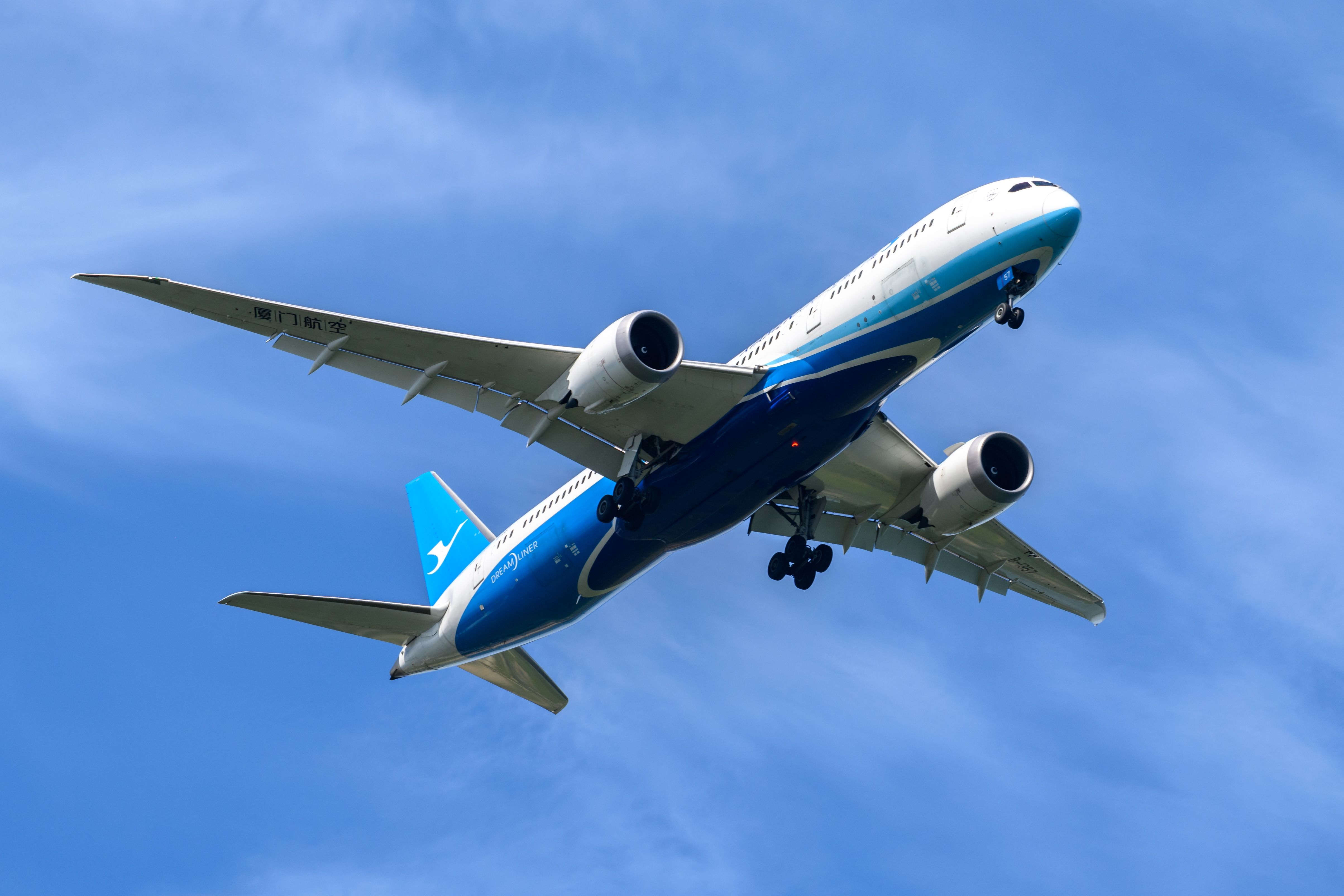The Boeing 777
and 787 Dreamliner
are two popular US-made widebody aircraft operated by several airlines around the world. Although the 787, by name, is a natural successor to the 777, the programs are 14 years apart. During that time, ![]() Boeing
Boeing
found new and innovative ways to modernize its widebody aircraft. Despite the 787 being a newer aircraft, the 777 continues to evolve and is still in production.
While there may be some similarities between the two aircraft, the differences undoubtedly trump any shared qualities. The largest difference, perhaps, is the appearance of the aircraft, as any aviation geek would be able to distinguish the two planes. Many airlines may have initially viewed the 787 as a satisfactory replacement or co-operator to the 777, but others had a different approach. Delta Air Lines is one example, as the carrier retired its 777-200LRs with no intention of ordering the 787.
Here are five differences between the two widebody twinjets:
1
2 variants & 3 variants
Each aircraft type has stretched versions
The 777 program was launched in 1990 with the original -200 variant, which is the shortest model of the plane. The aircraft performed its first flight in 1994 and was delivered to launch customer ![]() United Airlines
United Airlines
in 1995. While the jet performed as expected, Boeing began to research how to improve the model, which introduced the following:
- -200ER subvariant
- -300 variant
- -300ER subvariant
Photo: Vytautas Kielaitis | Shutterstock
When the US planemaker launched the 787 program in 2004, it was planned that the aircraft would have three variants – different from the 777. However, the process to roll out the original 787-8, 787-9, and 787-10 took seven years:
-
The 787-8 entered service with
All Nippon Airways (ANA)in 2011
- ANA was also the first airline to introduce the 787-9 in 2014
- The 787-10 entered service with Singapore Airlines in 2018
When looking at the origins of each aircraft, the 777 subsequently had two variants and the 787 and three. However, since 2020, the 777 program has continued with the X model, which introduces the -8X and -9X variants.
2
Wing design
Curved versus straight out
The 787 could be argued as one of the world’s most beautiful aircraft thanks to its unique, innovative, and sleek design. The specific appearance of the aircraft seconds after lifting off from the ground is a sight plane spotters and aviation geeks alike are sure to enjoy. However, the look is not purely cosmetic. According to the Aviation for Aviators blog, the gentle curvature of a 787’s wings
is a result of years of research and testing that was aimed at improving the aircraft’s performance and passenger comfort. Unique to the 787, the feature makes the aircraft one of a kind:
- The curved shape allows for smoother airflow over the surface of the wing, which can reduce turbulence and drag
- They also promote efficiency, lower fuel consumption, and longer range
- The curved wings are also designed for optimized performance across a range of speeds and environments
Photo: vaalaa | Shutterstock
Unlike the 787, the 777 was produced with a typical straight wing. However, later versions of the 777-200LR and -300ER introduced extended raked wingtips
, which have enhanced the overall aerodynamic efficiency of the aircraft. Extended by six and a half feet, the wings specifically reduce takeoff field length, increase climb performance, and reduce fuel burn. The 777X will introduce new folding wingtips on a commercial aircraft.
3
Engine types & windows
Three different manufacturers and advanced technology
The 777 operates the world’s largest and most powerful commercial aircraft engine, which is the GE9X. This particular engine, developed by General Electric
, specifically powers the 777X family of aircraft. It is a successor to the GE90, which notably powers the 777-200ER and -300ER subvariants. The GEnx was designed to power the 787 family, but is not quite as large as the GE90 or GE9X.
General Electric, however, is not the only manufacturer that designs engines for the 777 and 787 – Rolls-Royce
is another. Pratt & Whitney has only made engines for the 777, which gives the aircraft a unique element, being developed with three different engine types, compared to the 787 only having two:
- 777 – Pratt & Whitney PW4000 engines, General Electric GE90 engines, and Rolls-Royce Trent 800 engines
- 787 – General Electric GEnx-1B and the Rolls-Royce Trent 1000
Photo: Sumit Singh | Simple Flying
One unique element of the 787 is its
windows
. Not only are they larger in size, but they feature ground-breaking technology that allows passengers to digitally dim the light. This eliminates the need for physical window shades featured on the 777 and every other commercial aircraft.
4
Aircraft utilization
777 freighters, but what about the 787
With a gap of more than a decade between aircraft programs, it is natural for the 777 to have more examples produced and other uses of the plane. As of August 2024, there are a total of 1,738 examples of the 777, while the 787 has 1,142, according to Boeing. The 777 notably has a freighter variant in service as opposed to the 787:
- The 777 Freighter (777F) is similar to the -200LR variant, based on airframe, engines, and fuel capacity
-
It launched in 2009 with
Air France - The aircraft was made new and not converted from a passenger aircraft
Photo: Lufthansa Cargo
The 787 program does not currently have a freighter counterpart. However, it has been a proposed variant. It has been widely reported that Boeing is indeed working on a 787 freighter to replace its 767 freighters. It is unclear when production of the aircraft variant might begin.
5
Airframe & capacity
Composite materials, but fewer seats
Thanks to Boeing’s innovation, 50% of the primary structure of the 787 is made of
composite
materials, which include the fuselage and wing. This allows the aircraft to be 20% more fuel efficient. According to ScienceDirect, the plane is 80% composite by volume:
- By weight, the material contents are about 50% composite, 20% aluminum, 15% titanium, 10% steel, and 5% other
- Aluminum is used for the wing and leading edges on the tail, while titanium is mainly used on the engines and fasteners
- Steel is used in various areas on the aircraft including the landing gear
Photo: A Periam Photography | Shutterstock
Although the 787’s longest variant is the -10 model, the 777 still beats out the aircraft in terms of capacity. According to Boeing, the 777-300 can accommodate a total of 392 passengers
in a two-class configuration, while the 787-10 can only house 336 seats across two classes.

